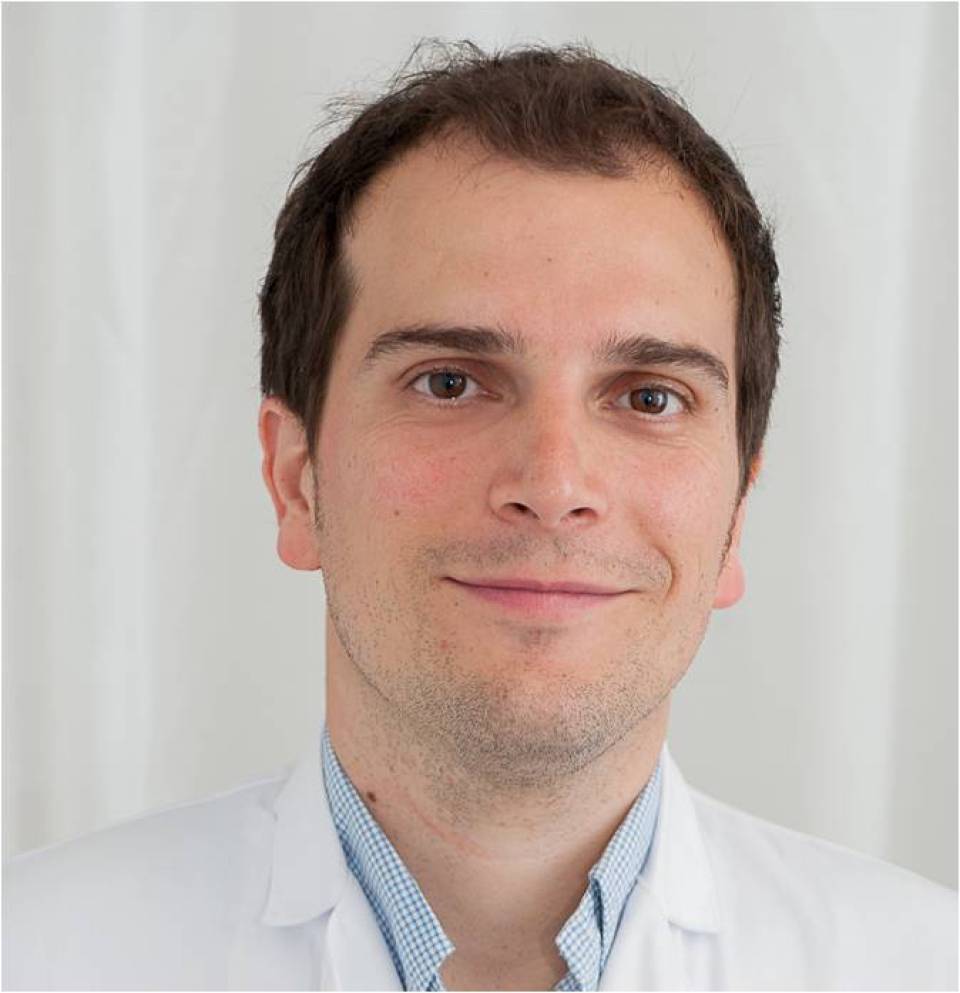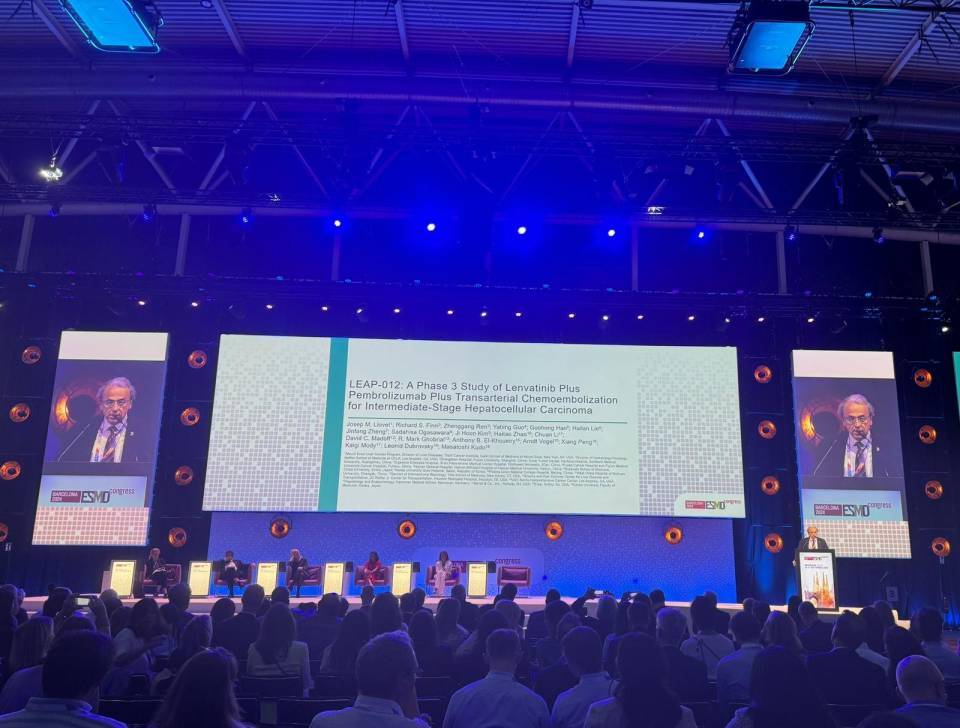Lung Cancer treatment
Once lung cancer has been diagnosed, a multidisciplinary committee evaluates each case individually to offer the treatment with the greatest possibility of a cure.
The committee is made up of all the professionals directly linked to the disease diagnosis and treatment process, such as specialists in pulmonology, radiology, nuclear medicine, pathology, medical oncology, radiotherapy, thoracic surgery, molecular biology and advanced nursing practice in lung cancer.
Once agreed, the physician responsible informs the patient of the decision and explains the treatment.
The type of treatment is chosen based on the following factors:
- Patient features: age, other diseases that make treatment difficult and functional status.
- Tumour type.
- Phase or stage of the disease (TNM).
There are several types of therapeutic approaches that can be taken for lung cancer, either individually or in combination, depending on the extent of the disease and the biological properties of the tumour:
- Surgery
- Non-surgical treatment
- Other treatments
- Palliative treatment
Surgical procedures aim to completely eliminate all tumour cells and cure the disease. The location and size of the tumour determine the extent of surgery required. DDepending on the case, additional treatment may be included before or after: radiotherapy, chemotherapy, immunotherapy or other targeted therapies. Surgery offers the best chance of cure and is indicated for patients with early stage lung cancer who have good overall health. Around 30% of patients with lung cancer can benefit from surgical treatment.
After selecting this approach, the type of surgery to be carried out is assessed:
The thoracic surgeon decides the best incision and approach to perform for any of the aforementioned surgical procedures. The different options available are:
- Conventional open surgery (thoracotomy). An incision is made in the thorax of about 10-20 cm between two ribs and a separator inserted between them to create a space for the operation.
- Minimally invasive surgery (thoracoscopy or robotic surgery). This is a closed surgical procedure consisting of 1-2 small incisions, through which a camera is inserted to see inside the thorax and for the instruments to perform the surgical procedure, without having to insert a separator between the ribs.
Whenever possible, keyhole surgery is performed, either thoracoscopic or robotic, due to the benefits for the patient: less postoperative pain, faster recovery and better aesthetic results.

Lobectomy. Surgical procedure involving removal of the lobe of the lung containing the tumour. The right lung is divided into three lobes (upper, middle and lower), while the left comprises two lobes (upper and lower). A lobectomy, accompanied by removal of the lymph nodes, is the standard treatment for early stage lung cancer.

Pneumonectomy. Surgery to remove an entire lung. This operation is performed on tumours located in the bronchi, the lung’s main airways, or when the tumour affects more than one lobe.

Segmentectomy. Each lobe is in turn composed of several segments. When the tumour is small and located in a peripheral area of the lung, then just the affected segment can be removed and the rest of the lobe preserved. Segmentectomies are carried out in patientswith benign tumors, of low malignancy or those cancers of less than 2 cm in size that can ensure safe oncological margins. It is also indicated in cases of lung metastasis due to a cancer originating in another organ, or in those patients who would not tolerate a broader lung resection given their overall condition.

Atypical sublobar resection. This involves removing a portion of the affected lung lobe. As with segmentectomies, they are carried out in patients with benign or low malignancy tumours, in cases of lung metastasis due to a cancer originating in another organ, or in those patients who would not tolerate a broader lung resection given their overall condition. It can also be carried out in lung cancers of less than 2 cm in size that can ensure oncologic safety margins or that, due to the patient's physical condition, the other surgical options are not advisable.
As with any other surgery, that of lung cancer involves risks and complications. Some of the most common are:
- Infection
- Accumulation of air between the lung and the chest wall (pleural cavity) that can cause a collapse of the lung (tension pneumothorax)
- Bleeding (haemorrhage)
- Tube opening between a bronchiole and the pleural cavity that leads to the filtration of air or fluid into the surgical area (broncho-pleural fistula)
- Accumulation of pus in the chest cavity (empyema)
There may be other risks, depending on the state of health of the individual. It is important to consult the medical team of any doubts before this procedure.
In lung cancer surgery, as in the majority of surgical operations, there can be, with more or less frequency, complications and adverse effects that may alter the quality of life of the patient.
The most important is the control of the patient’s pain, for which the doctor will prescribe a series of drugs. If the pain does not abate, it must be mentioned to the healthcare team.
Another of the frequent complications in this type of surgery is the accumulation of fluids inside the chest. To prevent this happening, the surgeon inserts a small drainage tube at the level of the wound, which is withdrawn after a few days.
After the removal of part or all of the lung, some patients experience some difficulty in breathing. It is a sensation that normally disappears with time. It is possible that the patient may need oxygen after the surgery, but this is usually stopped before being discharged from hospital.
Despite patients being bedridden, they should be able to move about within their possibilities, and little by little to walk in order to recover their strength.
It is also advised to learn deep breathing exercises and techniques in order to cough, to improve lung expansion, and help prevent post-operative pneumonia.
Treatment is individualised and depends on the degree of extension of the disease, the general status of the patient, the histological subtype and the genetic properties of the tumour. During treatment, different tests are performed to assess the treatments’ effectiveness.
Nowadays, there are numerous therapeutic options available to treat lung cancer:

Chemotherapy is still one of the most widely used systemic treatments for lung cancer, either on its own or in combination with other therapies. It works by inhibiting cell division for both tumour and healthy cells. Thus, adverse or side effects associated with this treatment may be experienced.
Chemotherapy is generally administered intravenously, although in some cases it can be provided orally. It can be given as a combination of two or more drugs (polychemotherapy) or just one (monotherapy).
Among the most widely used drugs are platinum derivatives (cisplatin and carboplatin), antifolates (pemetrexed), taxanes (paclitaxel and docetaxel), vinorelbine, gemcitabine and etoposide. The number of treatment cycles depends on the patient and the tumour stage, although generally 4-6 cycles are administered.

Immunotherapy is one of the most important advances that has proven to be effective in the treatment of lung cancer. It consists of administering a drug that stimulates the patient's own immune response, to recognise and destroy the tumour. It can be performed on its own or in combination with chemotherapy. Selection is based on markers evaluated in the tumour sample.
Immunotherapy is generally better tolerated than chemotherapy, but it can also have unwanted side effects due to the stimulation of the immune system.
Immunotherapy is provided intravenously in different administration regimens (every 2, 3 or 4 weeks). It is indicated for the treatment of advanced non-small cell lung cancer, as well as small cell lung cancer. It can also be given as adjunctive treatment before or after surgery.

Targeted, or oral, therapy has also revolutionised the treatment of this disease. This treatment blocks the growth of certain tumours with very specific genetic properties.
Tumours for which targeted treatments are currently available include those with alterations in the EGFR, ALK, RET, ROS1, and METex14 genes. Other genes with targeted therapies not yet authorised in Spain are KRASG12C, BRAFV600E, NTRK, EGFR and HER2 exon 20 insertions.
Unlike chemotherapy, many of these treatments are administered orally and are better tolerated. To find out if the patient can be treated with any of these biological treatments, a molecular study is performed on the tumour sample to determine the probability of response to treatment.

Radiation therapy or radiotherapy delivers high-energy X-rays to kill cancer cells. It is used often in lung cancer and can be given alone or in combination with chemotherapy or immunotherapy to: shrink the tumour before surgery; kill cancer cells after surgery; or alleviate symptoms of the tumour spreading outside the lung, such as to the brain or bones.
Non-small cell carcinoma:
- In early surgical stages (resectable or operable stages II-III), chemotherapy with or without immunotherapy may be administered before surgery (neoadjuvant therapy) or after surgery (adjuvant therapy). Treatment with targeted therapy (osimertinib) is also indicated after surgery in patients with specific EGFR gene alterations. The common goal is to decrease the risk of the tumour returning over time, as well as to induce a tumour response before surgery to improve surgical results and decrease the risk of it coming back (recurrence).
- When surgery is not advisable in unresectable or inoperable tumours of the thorax (stages IIIB-IIIC), the treatment of choice is chemotherapy and radiotherapy administered together. The aim is to increase sensitivity and achieve a higher degree of tumour eradication. After radiotherapy, administration of immunotherapy for one year can be considered in cases with the appropriate tumour properties.
- For advanced cases (stage IV), 3 therapeutic strategies are available: chemotherapy, immunotherapy and targeted therapy. The selection is individualised according to the genetic properties of the tumour. Treatment plays a transcendental role by reducing tumour volume and slowing down tumour growth, with the aim of managing the disease if it can’t be eradicated.
Small cell carcinoma:
- Two treatment options are available: chemotherapy (the most common agents used are a combination of platinum derivatives and etoposide) and immunotherapy. Oral targeted therapy is not available for this type of tumour. Radiotherapy plays a very important role in this disease, both for the control of the thoracic disease and at the brain level.
- In localised stages (within the lung), radiotherapy is administered with chemotherapy to eradicate the disease.
- In advanced or extrathoracic stages (outside the lung), a combination treatment of chemotherapy and immunotherapy has been shown to be more effective than chemotherapy alone.
Each specific treatment administered has different side effects. These must be reported by the doctor or advanced practice nurse before starting treatment. Early identification and prevention can improve associated symptoms.
- Chemotherapy. Among the side effects that may appear are: fatigue (asthenia), a change in the taste of food, nausea, vomiting, hair loss, inflammation of the mucosa of the mouth, fever, constipation or diarrhoea, abdominal and muscle pain, hives and nail lesions. If you have any questions, you should discuss them with your medical team.
- Immunotherapy This can cause inflammation or abnormality in any organ or tissue, such as endocrine organ dysfunction and thyroid or adrenal glands failure. Among the most common side effects are: fatigue (asthenia), itching, skin redness and muscle and joint pain. If you have any questions, you should discuss them with your medical team.
- Targeted therapy Side effects are very variable, depending on the type of therapy administered. Each patient has to receive therapeutic education tailored to the type of personalised treatment being administered.
- Radiotherapy. This may lead to skin irritation, inflammation of the oesophageal mucosa (oesophagitis or difficulty swallowing) and fatigue. Pneumonitis (lung tissue inflammation) may appear months after the treatment is over and may be accompanied by increased respiratory distress. If you have any questions, you should discuss them with your medical team.
- Radiofrequency. Tumour ablation can be achieved by placing a catheter in the lung. This is indicated for small tumours (less than 2 cm) where surgery cannot be performed.
- Stereotactic radiosurgery (SRS). This is a type of radiotherapy directing high-powered X-rays at a small area of the body. It is indicated for treating brain metastasis and small lung lesions.
- Bronchial stents. This consists of placing a stent inside the bronchi to dilate the airway when the tumour is inside the bronchi and hinders the passage of air.
Cancer is associated with a wide range of physical problems but it also entails emotional ones. Lung cancer treatment must focus on all of these aspects.
Various studies have shown that palliative treatment not only improves the quality of life in patients with advanced lung cancer but it can also help them live longer.
Palliative care helps alleviate physical symptoms, such as pain, while also addressing the emotional and spiritual anxiety felt by patients and their families.
Substantiated information by:






Published: 20 February 2018
Updated: 26 September 2023
Subscribe
Receive the latest updates related to this content.
Thank you for subscribing!
If this is the first time you subscribe you will receive a confirmation email, check your inbox
Lung Cancer related news
19 September 2024
Clínic-IDIBAPS researchers present around 40 studies at ESMO 2024
1 February 2023


